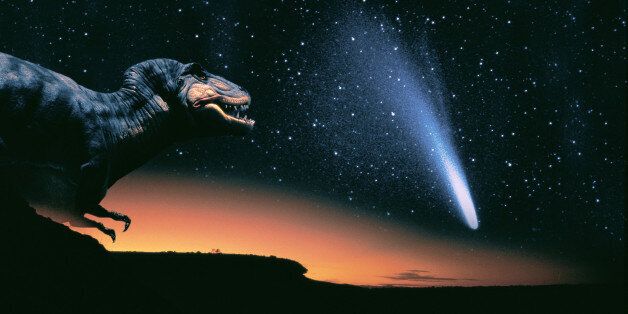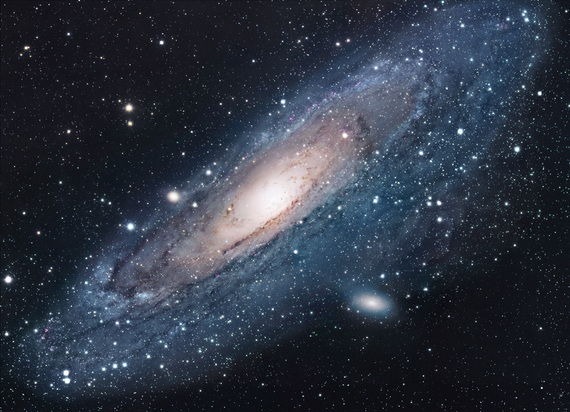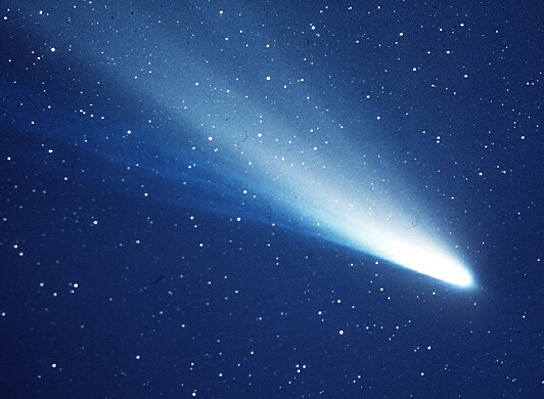
Dark matter is one of the greatest mysteries in physics and astronomy. We know that it's there, but we can't see it, hear it, taste it, smell it, or feel it. The reason for this is that it doesn't interact with normal matter in any way except gravitationally. Because it doesn't interact electromagnetically with anything, it can't absorb, reflect, or emit light (so you can't see it), and it's completely immune to all chemical reactions. Since gravitation is weak, the only way you could ever feel dark matter would be if somehow a huge amount of it was condensed into a small space near you. Then you'd fall into it.
And gravitation is the reason that dark matter likes the company of other matter and congregates inside galaxies. This is how it was first discovered in the 1930s by the Dutch astronomer Jan Oort, and independently by the American-Swiss astronomer Fritz Zwicky, when they noticed a significant difference between, on the one hand, the amount of matter in galaxies based on their gravitational pull and, on the other, the visible matter in the form of stars and gas clouds. Since then, it has been verified to exist through gravitational lensing and other methods.
All galaxies have large amounts of dark matter inside them -- five times more than visible matter. And much of it is believed to reside around the galaxy's core, where the gravitational pull is the strongest. Equally, the matter inside galaxies is densest along the plane of the galaxy, and dark matter therefore resides densely in that flat region as well.
Like all galaxies, the Andromeda Galaxy contains a large amount of dark matter, concentrated in the core and along the plane of the galaxy (photo credit: NASA)
New research suggests a tantalizing hypothesis: that the dark matter in the Milky Way caused the mass extinction at the K-T boundary 65 million years ago, which killed off the dinosaurs, as well as other mass extinctions, which seem to take place somewhat regularly, with a period of some 35 million years.
Many of these extinctions occur when a large Solar System object, such as a comet or an asteroid, hits the surface of the Earth with high impact, creating a crater and producing great heat and a dust cloud that rises to the atmosphere and adversely affects the weather for years.
A comet (photo credit: NASA)
In a new scientific paper, Harvard physicists Lisa Randall and Matthew Reece report on a statistical analysis they conducted, correlating the ages of craters produced by the impacts of asteroids or comets on Earth with the position that the Solar System occupied at the time of impact with respect to the plane of the Milky Way Galaxy.
The rough periodicity with which these events occur has been known to science for decades, and in the 1980s analysis of some of the mass-extinction times led some scientists to propose that the Sun had an invisible companion star, perhaps a brown dwarf, which they named Nemesis. The assumption was that the period of the orbits of the Sun and Nemesis around their center of mass was about 35 million years, so that when Nemesis was closest to the Sun, its gravitational pull acted on the Oort cloud surrounding the Solar System, hurtling some of the comets that live in it toward the inner part of the Solar System, and sometimes one of them would hit the Earth.
The Oort Cloud (image credit: NASA)
But no one has ever discovered Nemesis, so most astronomers are pretty sure that it doesn't exist. The Randall and Reece research revives this idea in a new context. According to the authors, as the Solar System circles around the center of our galaxy, it moves periodically up and down across the plane of the galaxy. The density of visible, known matter in the galactic midplane is not enough to perturb the comets in the Oort cloud. So these scientists hypothesized a "dark disk" lying in this plane of the galaxy, whose gravitational pull may be enough to upset the comets as the Solar System passes through it every 35 million years, creating a barrage of comets unleashed in altered trajectories toward the Sun and the Earth.
It's a fascinating theory providing an interesting connection between two major mysteries of science: the nature of dark matter and the abrupt disappearance of the dinosaurs 65 million years ago. The authors caution, however, that the statistical significance of their finding is still modest.* Further research should shed more light on this intriguing idea.
Dark matter, huh? I always thought heavy smoking killed off the dinosaurs....
*The odds ratio was 3 to 1, meaning that the probability that a dark disk is the cause of periodic extinction events is three times the probability that the events are simply random. While this seems like a large number, it is not considered completely convincing.


